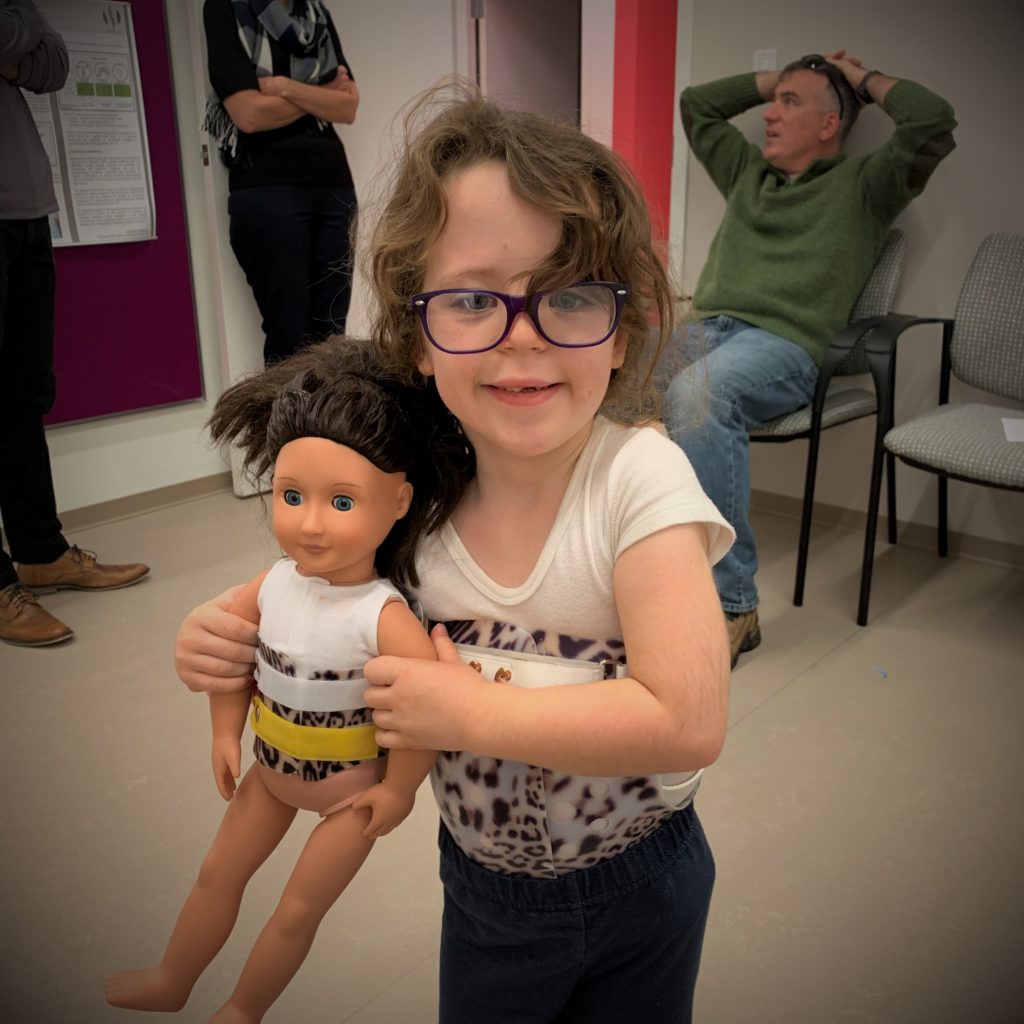We are a military family of five and have moved multiple times. We have three daughters each of whom has lived in as many houses as they are years old. I believe this in itself develops resiliency; little did we know there would be more to come.
In April 2018, we moved to Southern Maryland from San Diego, and one of our daughters, Neala, had just turned four. That May, we went to her four year well-check at a new pediatrician and, at the end of the visit, the doctor asked the routine question: do I have any concerns. I almost didn’t say anything (after all, a pediatrician in San Diego felt this concern was nothing that needed further attention), but my mom instinct told me to mention it: I’d noticed that Neala’s gait seemed a bit off. Once I mentioned this to our new pediatrician, she asked my daughter to walk across the room and then she had her bend over and touch her toes. The next thing I knew, we were headed down to radiology to get what would be her first X-ray of many and ending with a diagnosis of Infantile or Early Onset Scoliosis.
Scoliosis? What? Where did this come from? How on earth did I miss this? As her mom, as well as a nurse, I was trying to figure this out. What did this mean? Why did I feel scared but unsure as to exactly why? Yet, as I was worrying, my newly diagnosed 4-year-old was a rock star, already. She let them take her X-rays with no objection and seemed to handle everything with ease.
The pediatrician recommended a pediatric orthopedic specialist at Johns Hopkins. My mind was spinning a bit. Part of me was thankful we were only a couple of hours from Hopkins and part of me was in denial that we were headed there.
The specialist at Hopkins first recommended monitoring the curve through X-rays. By February 2019, the curvature progressed so the specialist suggested that we start treatment with casting. Casting? Like she won’t be able to take it off? Move the same way? Bathe? Neala had her first axillary cast applied on Valentine’s Day last year. She wore this one until right after her 5th birthday in May. That cast was removed and the second one applied within 20 minutes. I knew she was a tough kid but watching her endure this process was a true testament to the inner strength of young children. After the second cast was applied, they took an X-ray to assess how much the cast had corrected her curve. The correction was a few degrees. They decided to pull her left arm up and cast it as well in hopes for more correction. For almost three months, our daughter lived her life not only with an axillary cast, but also with her left arm elevated and projected away from her body. She couldn’t go to the neighborhood pool with her sisters or even take a bath. But, she continued to play t-ball: hitting, throwing and running. She amazed us.
At the end of July, her second cast came off. We had been told that a certain orthotic and prosthetic company would be making her a Milwaukee brace. I looked up Milwaukee brace and my stomach did a small flip of concern. In the meantime, I had heard of and researched the National Scoliosis Center and certified orthotist, Luke Stikeleather. I am forever grateful that we found this amazing place and its wonderful, dedicated team. Luke and staff made Neala’s first brace the day after her cast came off at Hopkins. They worked tirelessly all day Friday, and Luke even came in on a Saturday morning to make sure the initial brace adjustment was going well. This brace greatly improved Neala’s quality of life. She wears it faithfully 23 hours per day and never complains. She can move around like all of her peers, and she was even able to swim every day for the last few weeks of the summer (not wearing the brace during swimming, of course). The best news is: the Rigo Cheneau brace, from the National Scoliosis Center, is providing the correction she needs.
The best news is: the Rigo Cheneau brace, from the National Scoliosis Center, is providing the correction she needs.
We are now a year and a half into this journey. It is truly one step at a time. It is a unique diagnosis in young children; and, different treatment options—from monitoring to casting to bracing—and combinations of treatments vary from child to child. But, if you look for the right resources you will find some support and not feel as alone. I cannot fully express the respect and gratitude that I, my daughter and our family have for Luke Stikeleather and the National Scoliosis Center.
